Animal movement technologies have already significantly advanced our understanding of the natural world, from uncovering previously mysterious migration patterns and key movement corridors to demonstrating the impacts of anthropogenic pressures and climate change. Continuing advances in the development of technologies for collecting and transmitting bio-logging data, combined with the increased availability of high-resolution environmental data and analytical developments in movement modelling, are opening doors to novel applications. However, there are still major gaps in the space, including mobilizing movement data to translate data from tracking devices into insights for application in policy and practice. This group is a place for the animal movement community to connect and discuss our efforts to advance the field.
Resources for beginners
Learn about WILDLABS Animal Movement research projects
- MoveBON Initiative Announcement
- MoveBON Follow-Up Discussion
- Virtual Meetup Season 4: Tracking Progress (A WILDLABS research project on movement ecology)
Group curators
- @TaliaSpeaker
- | She/her
WILDLABS & World Wide Fund for Nature/ World Wildlife Fund (WWF)
I'm the Executive Manager of WILDLABS at WWF



- 23 Resources
- 64 Discussions
- 31 Groups
- @lhughey
- | she/her
Smithsonian Conservation Biology Institute
I am an ecologist and program manager with experience leading collaborative research projects in international settings. I specialize in the application of animal tracking data to conserve migratory species on a changing planet.



- 6 Resources
- 10 Discussions
- 3 Groups
No showcases have been added to this group yet.
- @tutgut5
- | she/her
- 0 Resources
- 7 Discussions
- 8 Groups
- @GrecoBobby
- | He/Him
PhD Student Clemson University. Investigating applied management techniques in crocodilians
- 0 Resources
- 0 Discussions
- 4 Groups
Margo Supplies - Wildlife Technology



- 0 Resources
- 43 Discussions
- 3 Groups
- @pchwalek
- | He/him/his
I'm a PhD candidate in the Responsive Environments Group, working on electronic systems for human and wildlife monitoring.



- 0 Resources
- 18 Discussions
- 9 Groups
- @reny.tyson.moore
- | She/Her/Hers
- 0 Resources
- 0 Discussions
- 4 Groups
Tech-Driven Conservation with a Wild Twist

- 0 Resources
- 1 Discussions
- 8 Groups
Zoological Society London (ZSL)
Technical Project Manager in ZSL's Conservation Technology Unit



- 2 Resources
- 26 Discussions
- 7 Groups
- 0 Resources
- 1 Discussions
- 1 Groups
Currently a data scientist in industry working on mechanistic models of risk, previously worked on modeling coral reefs. I am interested in the potential for emerging technologies and new ideas to help us solve environmental crises.
- 0 Resources
- 0 Discussions
- 14 Groups
- @OakAlice
- | She/her
PhD researcher standardising machine learning approaches for behaviour classification in free-roaming wild animals.
- 0 Resources
- 0 Discussions
- 7 Groups
- @Kasi
- | He/him
Game Rangers International
Kasi Amor Kalande is a young conservationist with experience in elephant movement research, GIS, and conservation technology.
- 1 Resources
- 0 Discussions
- 7 Groups
- @claumemo
- | she/her
- 0 Resources
- 0 Discussions
- 7 Groups
In the second article in my series examining how people find biologging tech for their projects, I spoke with Yvan Satgé with the Clemson University to discuss how he sourced tags for studying the black-capped petrel.
23 November 2023
Article
annual license offers available for wildlabs members
21 November 2023
Applications for Animove 2024 can now be submitted.
16 November 2023
In the first article in my series examining the ways people find biologging tech for their project, Neus Estela Ribera, a Technical Specialist with Fauna and Flora, discusses how she used GPS collars to track elephants...
16 November 2023
As the WILDLABS Conservation Technology Intern, I have conducted research into the biologging field to find out what tech is available and how researchers find appropriate tools for their projects. This is the...
16 November 2023
I just discovered this freely available book on digital signal processing and love the fact that it is“…intended for students … who may not have much mathematical or engineering training.” Seems like a great resource...
31 October 2023
handling one-value-per-line formats for burst and continuous data
27 October 2023
With the rising threats to biodiversity such as wildlife crime, climate change and human-wildlife conflict today, wildlife monitoring technologies have become vital to study movement ecology, behaviour patterns, changes...
25 October 2023
Competition funded PhD Position at University of St Andrews School of Mathematics and Statistics
20 October 2023
Careers
Competition funded PhD Opportunity at University of St Andrews School of Mathematics and Statistics
20 October 2023
To celebrate #WMBD, BirdLife is excited to share the newly identified Marine Flyways!! Seabird tracking data were shared by over 60 researchers from 48 long-distance migratory species and have revealed SIX MarineFlyways...
20 October 2023
The Smithsonian Institution seeks a field- and data-oriented biologist to support marine animal telemetry research and to assist with activities of the Atlantic Cooperative Telemetry (ACT) Network.
24 August 2023
August 2025
event
September 2025
event
event
October 2025
event
November 2025
event
November 2023
event
100 Products
Recently updated products
| Description | Activity | Replies | Groups | Updated |
|---|---|---|---|---|
| Hi Lars,One of the problems you identified with your Milsar units was the antenna being worn off. This was solved in our units by the antenna being epoxied into an abrasion... |
+9
|
Animal Movement | 1 year 10 months ago | |
| The CLS Goniometer is an excellent tool for the job - I believe it is also available to rent (at least it used to). If you want to go the low-budget route I would consider... |
|
Animal Movement | 1 year 10 months ago | |
| Hi CaitlinI'd recommend https://naturecounters.com/ who from past experience will work with you to come up with a good trap design. Their approach is to use an IR to detect when... |
+3
|
Animal Movement | 2 years ago | |
| Hi Tobias! This sounds great and I am looking forward to trying it out after returning from field work! Very cool with the Vectronic Activity data! I am looking forward... |
|
Animal Movement, Software Development | 2 years ago | |
| Hi! We have been working with Save Vietnam's Wildlife to track Pangolins for a couple of years now. You can read our Case Study here: We also documented the... |
|
Animal Movement | 2 years 1 month ago | |
| Do you have a wild animal tracking story that involves adventure or misadventure? Share it with us! From going around in circles for hours... |
|
Animal Movement, Citizen Science, Drones, Geospatial | 2 years 2 months ago | |
| Using Movepps, I set up an email alert to check the tag voltage of deployed GPs collars and alert me if the fall under a threshold.We are... |
|
Animal Movement | 2 years 3 months ago | |
| I have been working with Movebank to get better support for Vectronic Live Feed data. It is now much easier to import and work with these... |
|
Animal Movement | 2 years 3 months ago | |
| Thank you Thomas, I'll take a look. |
|
Animal Movement | 2 years 3 months ago | |
| Hi Jackson @MargoJack!Thanks a lot for answering these questions.Looks like you have a very interesting product!Interesting point you raise with VHF beeing intercepted by poachers... |
|
Animal Movement | 2 years 4 months ago | |
| Not sure exactly how your telemetry will be deployed, but if it's going to be attached to an animal in a relatively non-invasive way, you might check with zoos or aquariums that... |
+3
|
Animal Movement, Marine Conservation, Sensors | 2 years 4 months ago | |
| Thanks Thomas, will do! |
|
Animal Movement | 2 years 4 months ago |
WildFind - a package to produce a georeferenced heatmap of VHF collared animals.
23 September 2018 10:50am
8 November 2018 9:25am
Thank-you Joachim,
Yes- that will probably resolve one of the issues.
I think the larger issue that Al was trying to deal with was related to the 'ghost' data that caused the noise in the data.
Perhaps the issues are related?? Maybe a logger rather than processor might reduce the errant frequencies that we were observing.
MJ
8 November 2018 12:45pm
Hello Mike
I am not sure whether a datalogger would resolve radio noise problems. I would expect more success from improving the antenna/receiver circuitry to get rid of the noise before you digitise/record. Unfortunately, I can't give you much advice on this subject but antenna/circuit design can be tricky.
I just watched your YouTube clips and noticed in the last clip that there seems to be a 40 dB margin between the transmitter signal and the background noise. Based on my limited experience, this should be plenty to clearly separate signal from noise. With the right type of signal conditioning/filters you should be able to log only the signal you are interested in. Record this together with the current location coordinates and you should get close to the data set you need for producing the heatmap.
Good luck,
Joachim Neff
Tiny tags and a broad research network help track small animal movements
31 October 2018 12:00am
Developing the Next Generation of Animal Telemetry Webinar
22 October 2018 2:19pm
Tracking poop... (and therefore seed dispersal)
30 October 2017 7:15pm
30 November 2017 2:58pm
Hi Chris,
Interesting challenge! Over on twitter, Ian Redmond has a suggestion:
What makes #elephants such important #GardenersoftheForest is that the #seeds pass through the gut undigested, ready for #germination miles from parent plant. How about acid-proof radio-transmitters in crush-proof pseudo-seeds that you insert into ripe fruit where eles forage? https://t.co/Q5skY90Jne
— Ian Redmond (@4Apes) November 30, 2017
What to you think? I'd be interested to hear from any of our engineers, would this sort of approach be feasible?
Steph
27 September 2018 10:16pm
Just to close this issue - I developed some iButtons and radio trackers which could be encased in medical safe epoxy and inserted into fruits for consumption by elephants. Unfortunately our focal elephant was very fussy... and she spat out all of the seeds in her fruits! Luckily she happily ate colour plastic beads... so we used those to calculate gut passage times. Sometimes the old school methods are the best methods!
Microwave Telemetry free tags
26 September 2018 1:37pm
Solar balloon to better track wildlife
3 September 2018 10:31am
20 September 2018 2:12am
Hi Albin,
I have attempted this (see videos below). We only had one day to trial the systems and predictably the winds were not in our favour.
I used the kit from the Public Lab weather balloon. https://publiclab.org/wiki/balloon-mapping
and we built the picavet along with tracking hardware. Was very DIY!
https://www.youtube.com/watch?v=Iy4z1vGHkyY
https://www.youtube.com/watch?v=9b3RnsoK3P8
Happy to answer questions.
regards,
Mike
20 September 2018 11:29am
Hi Mike,
Well, I thoroughly enjoyed both videos, particularly the second one - 'if only we had that sixth balloon, hmm?'.. Amazing.
On a more serious note - any chance you wrote anything up to accompany the videos?
Steph
20 September 2018 1:03pm
Thanks Steph,
No write-up. This little experiment was squeezed into some actual work. Very happy to describe components if someone is interested.
The balloon hobby project morphed into an UAV project using Software Defined Radio dongle as the VHF receiver.
I'm reluctant to hijack Albin's thread here other than to say that I should write something about the Wildfind project and note Al Brown's huge contribution to the work. He did the software, I just created the problem and a half-baked solution.
https://eartoearoak.com/software/wild-find
MJ

Telemetry spanish online course from Spain
19 September 2018 2:50pm
Next Generation Animal Tracking Ideation Challenge
14 September 2018 12:00am
Mataki-LITE: lessons learned from petrel tracking (Part II: Base-stations)
6 September 2018 7:13pm
6 September 2018 7:15pm
Power: Given the remoteness of Diablotin’s nesting sites (30 miles from the coast, ~2,000m above sea level, in the Sierra de Bahoruco National Park, Dominican Republic), I needed to rely on gear that easily be transported and adapted in the field (with limited access to electricity), withstand fog, rain and humidity, was allowed on international flights (cheaper than shipping to the Dominican Republic), could and was as cheap as possible. To power the base-stations, I chose Li-ion powerbanks as they are allowed on regular flights and (unlike car batteries) are easy to transport and affordable. Most regular powerbanks, though, have a safety feature that stops sending power when the device they recharge does not draw enough current: this is to avoid over-charging a fully-charged device. Since the Mataki-CLASSIC base-station draws very little current, typical powerbanks stopped after a few minutes. For this reason, I used Voltaic Systems’ V44 battery packs as their “Always On” feature is designed for low-power IoT.
Circuit: Since the battery’s 12,000mAh weren’t sufficient to keep the base-station safely running for the tracking period I needed (~ 1 month, at 480mAh per day), I paired it with a 5.5W solar-panels. The circuit was minimal (attachment 1): the solar-panel recharged the V44 battery, which delivered 5V-2A in “Always-ON” mode. The 5V-3.7V step-down regulator connected the battery to the base-station, in parallel with the 1,000µF capacitor.
Antenna: Given the dispersion of the nests of tagged petrels, I chose an omnidirectional antenna. A directional, Yaggi-antenna could have been helpful for downloads from a distant vantage point, had the nests been clumped together. Each antenna had a maximum range of ~300m in open terrain but irregular relief and dense vegetation decreased that distance to ~100m. Note that in our region, the authorized UHF channel for private communications is 916mHz – this frequency might be different in other regions.
Enclosure: I enclosed the base-stations in a very simple version of this waterproof solar battery case, using a 1040 Pelican case: I trusted Pelican cases to have a good quality/price ratio. The battery barely fitted inside the case (I had to shorten the male 5.5x2.1mm input plug). While I still drilled a hole in the case, I didn’t use the M60 nut. Instead, I covered the hole and the cables (for the antenna and solar-panel) with Sugru and waterproofed them with 2-part epoxy: this allowed me to adapt the base-station more easily to the local conditions. For good measure, I also added a handful of desiccant packs into the case. Finally, I deployed the base-stations in open canopy, as close to the nests of the Black-capped petrels we tagged as possible. I tried to position the solar-panel to face the midday sun, a time when the morning fog had already burnt off but the afternoon clouds not yet rolled in (attachment 2: Deployed base-stations).
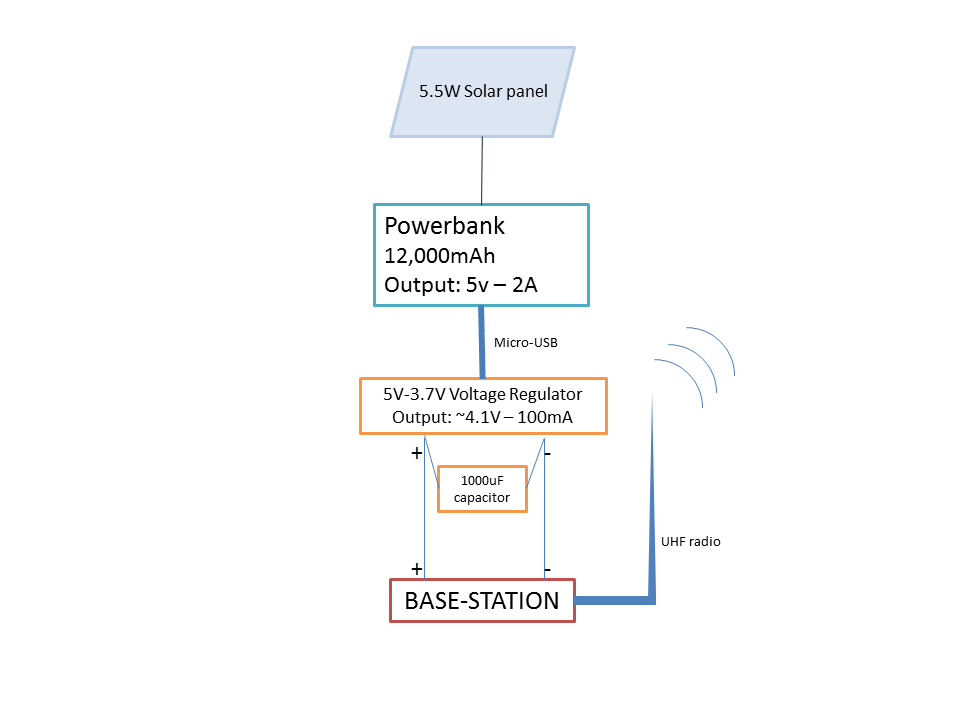
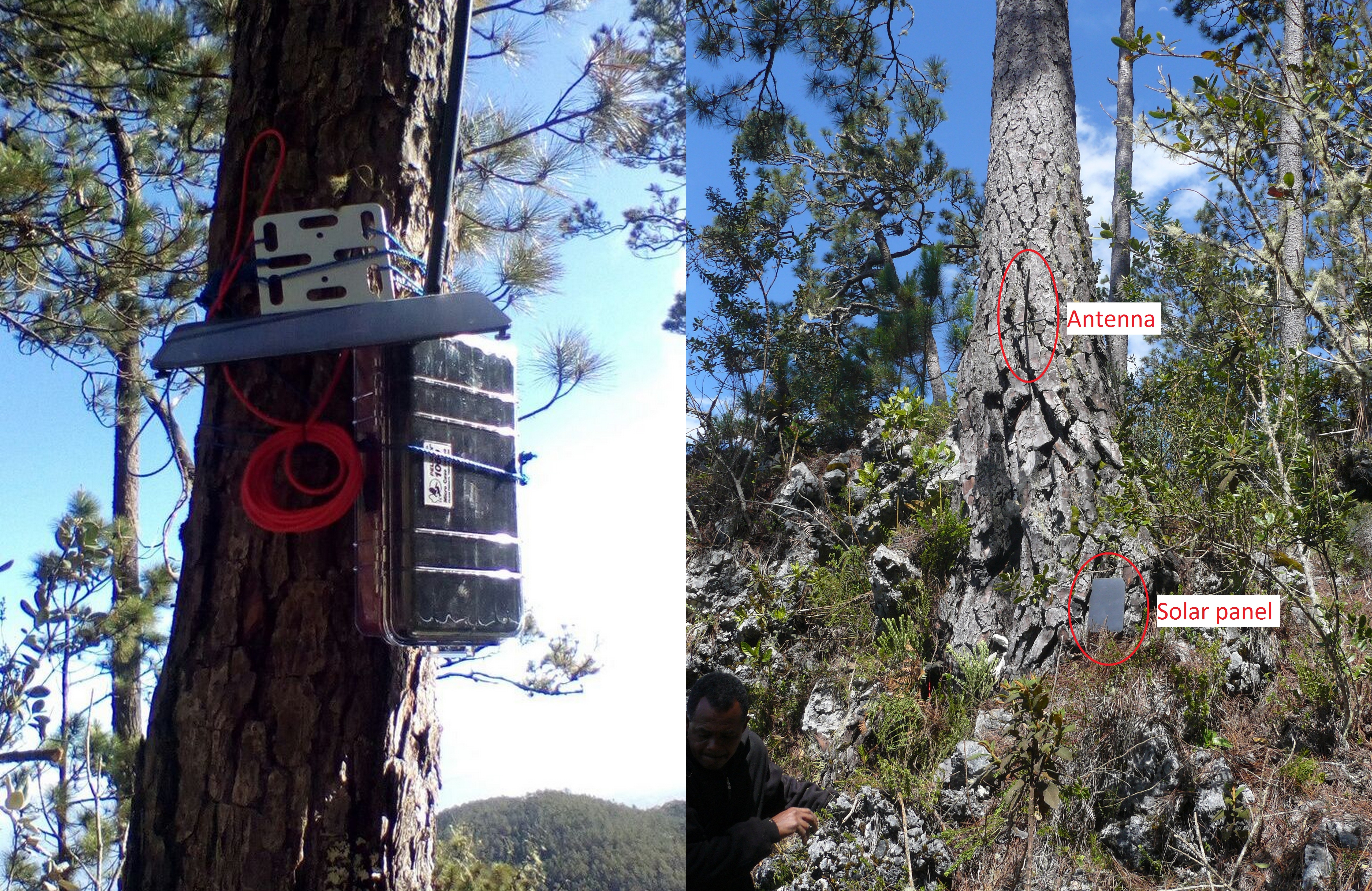
6 September 2018 7:20pm
Results: When we picked them up after a month and a half in the field, the base-stations had worked perfectly for the whole time. The battery levels stayed fairly consistent at >4.8V and with an individual range of about 0.5V. The panels positioned in full sun actually over-compensated the continuous power draw from the base-station.
Only a third of the deployed loggers had communicated with their respective base-stations but this could have several causes that were independent from the base-stations: logger battery life, waterproofing, attachment method; petrels staying at the nest for periods that were too short to communicate with base-stations; burrows that were too deep to allow radio waves.
I hope this will be useful, and please keep adding to the conversation.
Cheers,
Yvan
Mataki-LITE: lessons learned from petrel tracking (Part I: GPS loggers)
6 September 2018 7:00pm
6 September 2018 7:04pm
Discussion:
- Data recording rate:
1) Attachment location: It is likely that our attachment location on the underside of the tail had a negative impact on the recording rate. To avoid rectrix breakage and undue bouncing when flapping, we decided to center the loggers’ weight as close to the base of the tail as possible: loggers placed on top of the tail would have covered the uropygial gland therefore we chose to attach them on the underside, between the undertail coverts and the rectrices, with the GPS antenna pointing up.
2) GPS fix time: The location of GPS satellites at the time of recording might have prevented successful logging. Indeed, while GPS devices used by the general public have an ample supply of power that allows them to always be in communication with the network’s satellites (“hot start”), low-power wildlife tracking devices only activate GPS communication at the time of logging (“cold start”). Thus the amount of time required for a successful GPS logging (which is limited a priori to optimize power consumption) is affected by the location of GPS satellites at the moment of the cold start. The 4-minutes limit on GPS fix might have been to short.
6 September 2018 7:08pm
- Data recovery rate: Several possibilities exist for the lack of transmission:
1) Waterproofing failure: tests were performed to ensure that the waterproofing technique used in this study was resistant enough to sustain repeated immersions.
2) Death of tracked bird: The chicks of all tracked petrels were observed alive and in good condition in two visits in June and July, suggesting that tracked birds did not die during the tracking period.
3) Early loss of logger: Though the type of tape attachment I used in this study (which I reinforced with epoxy and a zip-tie) has been successful with other seabird, it is possible that rectrices broke off. I chose this technique instead of a dorsal attachment to keep the loggers from rubbing against the roof of rocky burrows, and to avoid the possibility of entanglement in hanging roots.
4) Early drain of logger battery: Remote-download GPS loggers such as Mataki-LITE have two main drains of power: 1) activating the GPS module to listen to communications from the network’s satellites, and 2) using the UHF radio to communicate with the base-station and, later, upload tracking data. I had written the logging script to optimize battery use through a geofence and a low-voltage mode. Based on recovered tracking data, it appears that none of the functioning loggers had entered the low-voltage mode during the ca 10 days at-sea though two of them had battery levels below the low-voltage threshold at the time of uploading data to the base-station (Table B.2). Since logger battery levels are only recorded when they send a heartbeat to the base station, it is unclear if these low battery levels had been reached earlier during the tracking period without triggering the low-voltage mode, had triggered the low-voltage mode but GPS data were not recorded, or resulted from a power drain due to radio communications.
5) Not enough time within range of base-station: It is possible that the loggers that did not transmit tracking data were not able to contact their respective base-stations despite having sufficient battery voltages. Radar surveys and camera-trapping at breeding colonies showed that Black-capped Petrels may reach speeds up to 70km/h when arriving at colonies and enter their burrows instantly. Upon leaving the nest, petrels stay <5 minutes outside the burrow. Pre-deployment trials showed that loggers placed at a burrow’s entrance were able to communicate with base-stations but loggers placed inside a burrow’s tunnel were not. The 2-minute heartbeat activated inside the 25-km geofence to optimize power should have been sufficient to upload tracking data but loggers that had failed to trigger the 25-km geofence (or that had already entered the low-voltage mode) were less likely to be within range of the base-station (~200 m) for long enough to send a successful heartbeat.
6 September 2018 7:09pm
Recommendations:
Mataki-LITE tags have a steep learning curve but they very adaptabile and cheap (for remote-download tags) so I hope these lessons-learned will prove useful for everybody.
- Future deployments may benefit from an attachment above the tail, ensuring that the uropygial gland is not covered; to avoid undue stress to the rectrices, the center of gravity of the logger should be as close to the rump as possible. Try dorsal deployments on birds nesting in large sod burrows.
- Although it is possible to extend the time period allocated to successfully log a GPS location, this would drastically increase power consumption. Therefore, try to improve attachment location before extending the GPS “ON time”.
- Simultaneous logging of GPS locations and battery levels, and GPS logging frequency may have to be decreased to optimize power consumption.
- Wider geofence radius and a higher heartbeat frequency in low-power mode.
Feel free to start the conversation and share your own scripts, deployment techniques and fixes!
Thanks,
Yvan
Solar balloon to better track wildlife
3 September 2018 10:25am
Spacewalk for ICARUS
24 August 2018 12:00am
RSPB Project Puffin Story Map
23 August 2018 9:08pm
How to share data on species to help conserve them… whilst avoiding them being exploited by poachers
20 August 2018 12:00am
Ocean Hack: San Francisco, 10-11th September, 2018
 One Ocean Collab
One Ocean Collab
20 August 2018 12:00am
Journal of Animal Ecology: Open Call for Biologging Papers
13 August 2018 5:06pm
Using crowd-sourced funding to track snakes
30 July 2018 12:00am
Tracking tags/collars survey - WWF Cons Tech Programme
8 November 2017 11:06am
13 April 2018 5:02pm
Hi All,
If you've not already please do complete the above survey. Results and kudos will be shared widely!
Thanks and best, Paul
12 July 2018 6:39am
Hi Everyone,
This survey is still open so please check it out if you haven't already. We are right below 200 participants, it would be great to boost that! Below is one example results, lots more to come, we'll share all results when its done.
thanks
Roland
12 July 2018 8:07am
Hi Roland,
Thanks for the update - great to hear how many responses you're at and get a hint of the results. Any word on when the survey might be closing?
Steph
From drone swarms to tree batteries, new tech is revolutionising ecology and conservation
 Euan Ritchie
and 1 more
Euan Ritchie
and 1 more
9 May 2018 12:00am
#Tech4Wildlife Photo Challenge 2018: Our Top 10
3 March 2018 12:00am
FIT Cheetahs
4 December 2017 12:00am
Learning To Be A Detection Dog Handler: The Teachings of Rubble
3 November 2017 12:00am
Consultancy - tracking tag and collar best practices
14 June 2017 7:12pm
28 September 2017 11:21am
This consultancy has been filled. Thank you for your interest.
Argos Chipset Giveaway Contest - deadline Oct. 14 2017
22 September 2017 2:16pm
Xerius tracking technology
23 May 2017 11:10am
14 September 2017 2:26pm
Thanks for sharing these Yvan - really interesting to see your process of designing harnesses for the tags. Please do keep us updated on the project as you progress. What made you go with the Xerius tag over others that are available?
My other comments are largely administrative, so bare with me. Sounds like it might be helpful for us to enable more types of files to be shared on WILDLABS- I'll have a look into this. Your contribution has shifted the direction of this conversation from an event invitation to practical project/information sharing discussion, so I'm also going to move this conversation into our wildlife tracking group, as I think this will make it more readily accessible to our tracking focused members if/when you update it with your finessed designs.
14 September 2017 3:49pm
Hi Steph,
My colleagues chose Xerius because they had the fastest turn-around time (the project had a late start and birds are starting to migrate soon) and cheaper prices. The tracking specs are similar to the other manufacturers of GPS-PTTs. I have never worked with Xerius tags but I visited their lab and they struck me by their attention to details and the quality of the hardware they created.
I will keep you posted.
19 September 2017 1:30pm
Hi Yvan,
Glad you have chosen Xerius as from what I have seen their equipment is excellent and I was very impressed with their telemetry knowledge. We have one of their goniometer units and this has enabled us to locate a number of our downed satellite tagged birds.
As for making up dummy tags and testing harnesses then another option is Polymorph, especially if you are working on a limited budget after paying for a number of tags! You just drop the beads into boiling water and mould into the shapes you require easily making holes and grooves etc. It sets rapidly and as you say the addition of nuts and bolts get you to your required weights.
https://www.maplin.co.uk/p/mindsets-polymorph-250g-n14at
Pit-tag automatic detector for very small animals
31 October 2016 2:27pm
1 February 2017 4:13pm
Hi Claude,
What sort of an environment will you be doing your research in, if you don't mind recapturing them again you could try using micro coded wire tags?
Hopefully that might be of some help to you and all the best with it.
Matt
15 September 2017 12:47am
Hi, you should explore (harmonic radar, Schottky diode 917 y 1834 MHz), the bad things it's that you can't get and ID and the receiver that uses two antennas it's really expensive (U$.7000) or use a radar system with satellite dish that would be more expensive.
18 September 2017 4:23pm
Hi Claude,
If you are looking into cord antennas, the attached paper might be of interest (the authors are all from CNRS, which might be easier for collaborations). A difference would be that you might need a faster sampling rate (since penguins are much slower than small mammals and take more time to cross the array of antennas).
Do keep us updated on your project.
Yvan
Developing small (>2g) low power proximity loggers
18 August 2017 11:57am
Update on camera trap tests with real animal targets
17 August 2017 1:24pm
Funding Opportunity: Leverage space technology for wildlife protection
6 July 2017 12:57pm
PIT tag suppliers in the UK
22 February 2017 1:19pm
29 March 2017 11:02am
Hi Kai - I asked for a UK supplier, but thanks.
Hi everyone -
I had a recommendation for http://www.wyremicrodesign.co.uk/. Apparently used successfully for a couple of projects, and designed/built some bespoke readers. The owner can be contacted on phil.rycroft@wyremicrodesign.co.uk.
I went with Francis Scientific Instruments in the end, as they've been reliable and helpful on past projects. You can contact Mike (Francis) on fsilog@btconnect.com.
Cheers, Ollie
29 March 2017 1:44pm
Hi Ollie,
Thank you for the update! This will be of use to other community members!
-John
5 May 2017 5:24pm
Not been on Wildlabs for a long time but I recommend Eccel Technology in Leicester and even build them into bird rings. We have been using theirs.
RSPB have built a data logger around the Arduino and plan to put the design and code on Wildlabs sometime later in the year. There are many commercially available and cheap means of solely reading PIT or as they also known RFID tags.
Thanks
Nigel




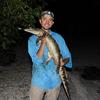





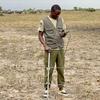




































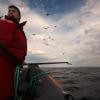

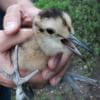






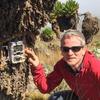


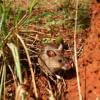



6 November 2018 10:20pm
Hello Mike
If I understood your system description correctly, you intend to analyse the radio data and produce the heatmap on board the drone. Why ?
I would do minimal data processing onboard, log any relevant details onto removable memory such as an SD card and do all further processing offline on a PC.
This should dramatically reduce the energy and processing demands of your drone-based hardware and simplify the software, too.
I guess there must be (open source?) solutions available that can convert data in a suitable format into a heatmap. This should save you having to re-invent that wheel.
Hope this is of some use.
Good luck,
Joachim Neff